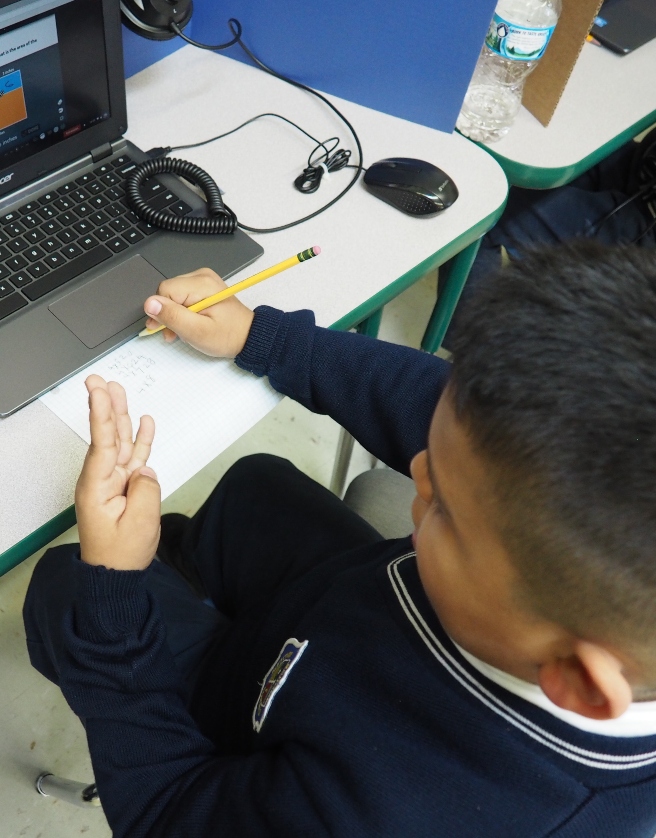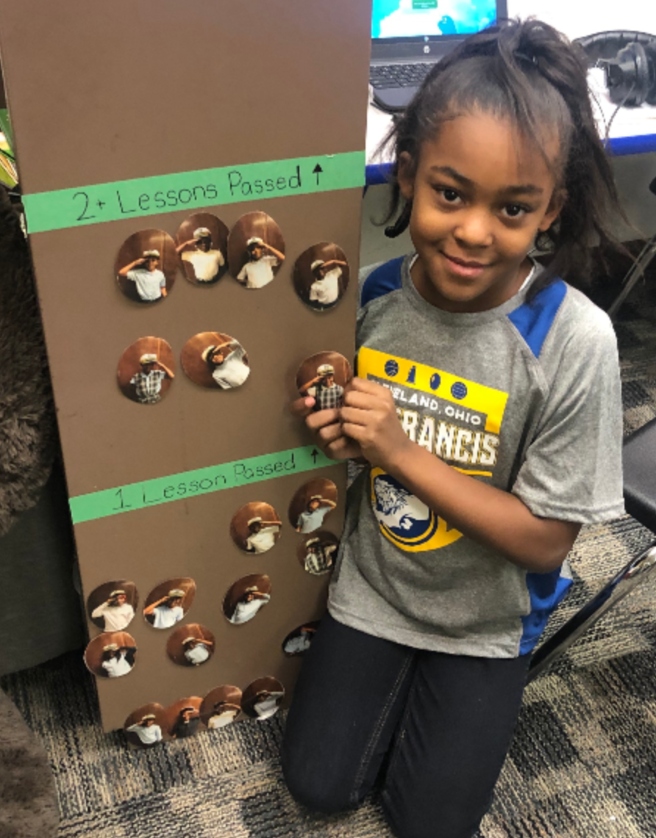Investment
Seton believes that it is important to invest in all members of the school community in both the blended learning model and the educational goals of the school. When students, families and educators are all invested in the same goals and model they can work together for the best student outcomes. When students are invested in the blended learning model—both the online content and small group instruction—they are more motivated to work hard and be the best learner they can be.
To promote investment in a blended learning community Seton has compiled resources around how to cultivate a growth mindset in your community, how to partner with and communicate with families around blended learning, and how to track student progress through conferencing, goal setting, tracking and incentives. These three components are essential for creating buy-in and sustain ongoing investment in a blended learning model.
Growth Mindset
A growth mindset is the self-perception and belief that one can learn more and become smarter through hard work and perseverance; that intelligence is not fixed. Seton’s model relies on a student’s understanding that their effort on blended content will directly contribute to their success and growth academically, now and in the future. In order for adults to foster and support students in their development, we need to be firmly grounded in the nuances of a growth mindset.
Researched and popularized by psychologist Carol Dweck, “In a growth mindset, people believe that their most basic abilities can be developed through dedication and hard work—brains and talent are just the starting point. This view creates a love of learning and a resilience that is essential for great accomplishment”. Research has shown a variety of benefits to student learning if students hold a growth mindset rather than a fixed mindset as learners. A blended learning classroom provides even more opportunities for a growth mindset to positively impact student achievement when we consider the individualized instruction students receive through their content providers. However, before promoting or adjusting student mindsets, teachers should evaluate students’ current mindsets. Teachers can establish a frame for comparing fixed and growth mindsets and then practice praising a student’s efforts and process rather than innate ability in order to encourage growth mindsets in their classrooms.

Resources for Growth Mindset
Parent Communication
Parents or guardians are the first and primary teachers in a child’s life and thus it is crucial for schools to communicate with adults in a student’s home about blended learning—whether it is a new, exciting or confusing, academic model the school is adopting or already familiar to the community. This frequent and proactive communication creates partnership with families, opens dialogue for parent voices in the school community and increases the overall investment and power of the blended learning model.
The resources on this this page support educators’ communication with families from introducing blended learning for the first time, to providing updates on student progress, preparing parents for high stakes testing and teachers and leaders for conversations with parents around blended learning.

Resources for Parent Communication
Blended Learning Introduction Letter
A letter to families outlining the blended learning classroom experience.
Parent Blended Learning Presentation
A presentation for families highlighting the elements of blended learning.
Communicating about MAP Testing
Student Progress
One of the greatest strengths, and crucial components, of any blended learning environment is the breadth of data and innate ability to monitor, incentivize and communicate student academic progress. Highly effective blended learning educators lean into a collection of student data as a tool to inform and target instruction; encourage, celebrate or redirect student learning; and communicate goals to students, parents and the school community.
The resources in this section relate to the four student progress elements Seton believes maximize the power of data to increase academic growth: tracking; incentives; conferencing; and goal-setting. None of the first three elements can be effective without strong and thoughtful goal-setting practices with students. Many educators and schools have natural strengths or prior experiences with one, or some of, these elements; the integration of all four elements in a school and classroom culture results in students that are highly motivated and take ownership of their learning and progress, while instructors and leaders frequently hold students accountable for their progress, provide feedback and deepen learning relationships.

